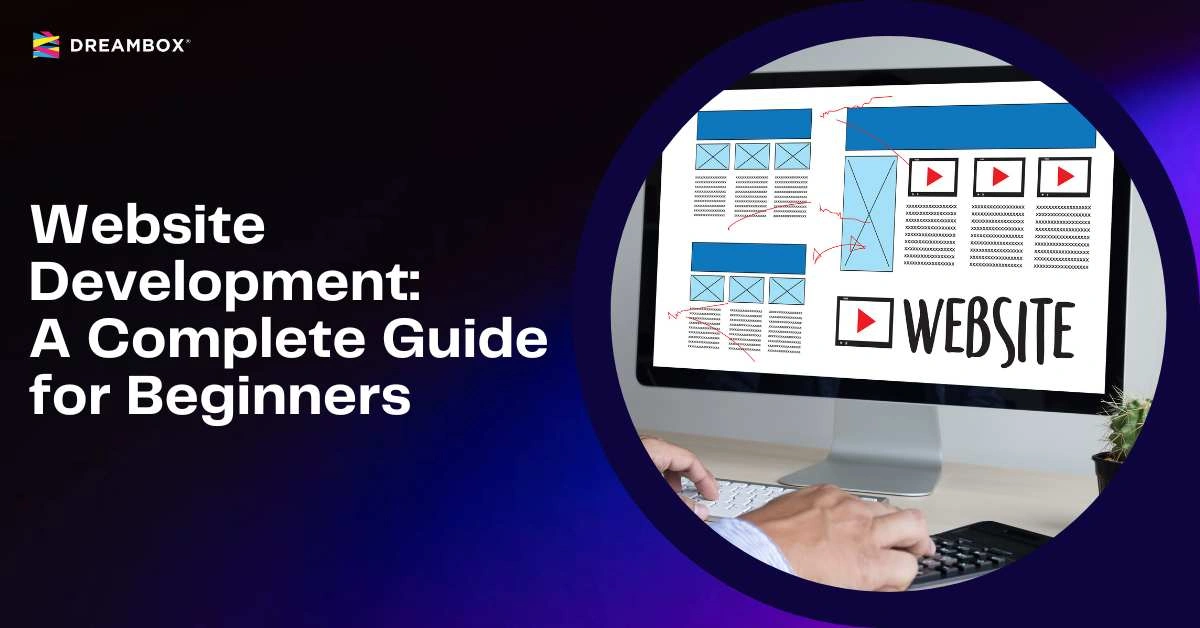Website development encompasses the entire process involved in designing, building, and managing a website.
This process focuses on the visual aspects or design and includes the structure, functionality, and optimal user experience.
As the digital world continues to evolve, websites have become a key point for businesses to interact with customers, introduce products or services, and build credibility in an increasingly competitive market.
In this article, we will dive deeper into various aspects of website development, from its definition and types to the skills required and the stages involved in the development process.
Definition of Website Development
Website development is the process of creating and managing a website, from designing the layout to developing the necessary functionalities to ensure the website runs smoothly.
Schedule a free 30-minute branding consultation session with our experts.
Website development involves various skills and technologies to create a website that is effective, efficient, and accessible to users.
Types of Website Development
Website development can be divided into several types based on various technical aspects. Here are the main types of website development:
Front-End Development
Front-end development deals with the elements visible to website visitors, such as design, layout, and user interface interactivity.
It involves the use of HTML, CSS, and JavaScript to create an engaging and responsive user experience.
Back-End Development
Back-end development focuses on the server-side of the website, which includes managing databases, server logic, and communication between the server and users.
Programming languages used in back-end development include PHP, Python, Ruby, and Node.js.
Full-Stack Development
Full-stack development covers both front-end and back-end aspects.
A full-stack developer has the capability to work on all aspects of website development, from the user interface to the server and database.
Basic Skills Needed in Website Development
If you’re interested in starting a career in website development, there are several basic skills you need to master:
HTML (Hypertext Markup Language)
HTML is the basic language used to create the structure of web pages. It forms the foundation of all websites and includes elements such as paragraphs, images, and links.
CSS (Cascading Style Sheets)
CSS is used to style the visual appearance of web pages, including setting colors, layouts, and responsive designs. With CSS, developers can customize how elements appear on a web page.
JavaScript
JavaScript is a programming language that allows developers to add interactivity to websites. With JavaScript, websites can respond dynamically to user actions, such as form submissions, image sliders, and scroll animations.
Stages in Website Development
Website development consists of several stages that need to be followed to create a functional and appealing website.
1. Information Gathering
At this stage, developers collaborate with clients to understand business goals, target audiences, and necessary website functionalities. This is a crucial step in planning the website creation process to ensure it meets the client’s needs.
2. Design
The design stage involves creating wireframes and mockups of the website layout. The design should consider user experience (UX) and user interface (UI) to ensure visitors have a smooth and pleasant browsing experience.
3. Implementation (Coding)
At this stage, developers begin writing code to bring the design into a functional website. This process involves using HTML, CSS, JavaScript, and back-end programming languages to build the website.
4. Testing and Deployment
Before the website is launched, testing is conducted to ensure the site works properly across various devices and browsers. Once testing is complete, the website is ready to be deployed (launched) to a live server.
5. Maintenance
Ongoing maintenance is necessary to ensure the website continues to function smoothly. This includes updating content, fixing bugs, and optimizing website performance.
Tools and Technologies Commonly Used in Website Development
There are various tools and technologies used in website development to ensure that websites run efficiently.
Frameworks and Libraries
Frameworks and libraries like React, Angular, and Vue.js are used to speed up front-end development.
On the back-end, frameworks such as Laravel (PHP) and Django (Python) are commonly used to simplify development.
Database Management Systems
Database management systems like MySQL, PostgreSQL, and MongoDB are used to store and manage website data.
Databases are crucial for data-driven applications such as e-commerce and content management systems (CMS).
Version Control Tools
Version control tools like Git help developers track changes in the code and collaborate with other team members during website development projects.
Start Your Website Development Journey with Dreambox
An effective website is not only visually appealing but also functional and provides an outstanding user experience.
With a better understanding of website development, the stages involved, and the tools used, you’re now more prepared to take the next steps.
Dreambox has the experience and expertise to develop websites that meet your business needs, focusing on both attractive design and optimal functionality.
We have helped many major brands create websites that not only support their branding but also contribute to achieving their larger business goals.
If you’re ready to start a successful website development journey, Dreambox is the right choice. Visit our Website Development service page to see how we can help you, or contact us for further consultation.
Don’t forget to explore other articles on the Dreambox blog, filled with insights and helpful information to support the growth of your business.










